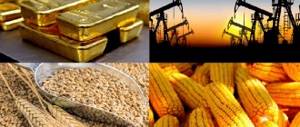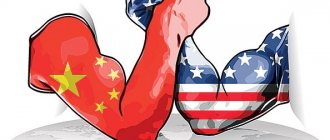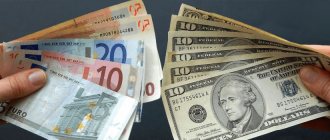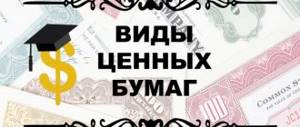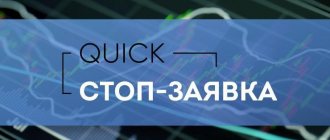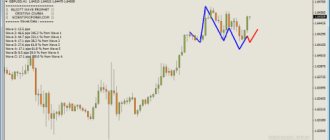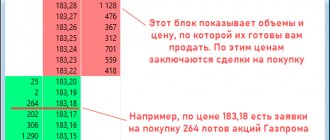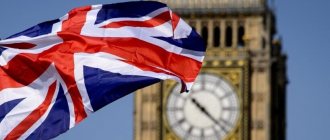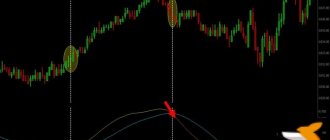Hello, dear blog guests, today we will talk about what a commodity exchange is, and we will also try to evaluate the possibilities of making money on it.
Binary options brokers provide their clients with the opportunity to use assets such as commodities to make money, but not all novice speculators take advantage of this opportunity. This is due to the fact that most beginners simply do not know what a commodity exchange is and how it functions. In fact, the commodity exchange is not inferior in terms of earnings, and in some cases even surpasses the stock and foreign exchange markets. On this exchange platform, speculators receive the same high income as when trading securities, currency pairs and indices. It is important to mention the fact that commodities are highly popular among experienced speculators who make money in the binary options market. The reason why commodities are so popular among professionals is because of their features. The key feature of commodities is that changes in their prices are much easier to predict. Commodities are rightfully considered the most predictable among professional speculators. Despite the predictability of quotes, commodities have a level of volatility comparable to currency pairs, which makes them a fairly convenient tool for making money.
Exchange requirements
It so happens that each exchange independently determines which goods will be included in trade on its platform. The product range changes every year, but only some requirements remain unchanged:
- Mandatory standardization. They trade on exchanges even when the declared goods are not available. Therefore, it is necessary to ensure maximum standardization, that is, all products must have the declared level of quality, be supplied to the exchange in the maximum quantity, and have conditions of storage, transportation and contract execution terms identical to other goods.
- Interchangeability. An exchange product is one that can be replaced by another similar in composition, quality and type, as well as labeling and batch quantity. Simply put, the product can be depersonalized if necessary.
- Mass character. Since there are many buyers and sellers on the exchanges at one time, this makes it possible to sell large quantities of goods and more accurately generate data on supply and demand, which will subsequently affect the establishment of market prices.
- Free pricing. Prices for commodities should be freely set depending on demand, supply and changes in other economic factors.
You may be interested in:Overhead costs are... Definition, concept, classification, types, expense item and accounting rules
You may be interested in: The basic concept of a credit institution: features, types, goals and rights
Perhaps these are the main characteristics of exchange goods formed by trading platforms.
Exchange commodity. Basic markets. Stock indices.
The foreign exchange market in the narrow sense of the word is a special institutional mechanism that mediates relations regarding the purchase and sale of foreign currency, where most transactions are concluded between banks (as well as with the participation of brokers and other financial institutions).
The foreign exchange market in the broad sense of the word is a relationship not only between its subjects (i.e., mainly between banks), but also between banks and clients.
The main characteristic feature of the foreign exchange market is that on it monetary units confront each other only in the form of entries in correspondent accounts. The foreign exchange market is an exchange and interbank market, since during operations on these markets the exchange rate is directly formed, operations are carried out using various means of communication and communications.
The role of the foreign exchange market in the economy is determined by its functions:
- servicing the international circulation of goods, services and capital;
- formation of the exchange rate under the influence of supply and demand;
- a mechanism for protection against currency risks and the application of speculative capital;
- an instrument of the state for monetary and economic policy purposes.
World, regional, national (local) foreign exchange markets differ depending on the volume, nature of foreign exchange transactions and the number of currencies used.
World currency markets are concentrated in global financial centers. Among them, foreign exchange markets stand out in London, New York, Frankfurt am Main, Paris, Zurich, Tokyo, Singapore, etc. In world foreign exchange markets, banks conduct transactions with currencies that are widely used in global payment turnover, and almost never make transactions with currencies of regional and local significance, regardless of their status and reliability.
Regional and local foreign exchange markets deal with certain convertible currencies. The quotation of currencies used for foreign exchange transactions in a certain region is carried out relatively regularly by banks in this region, and currencies of local significance are quoted by banks for which this currency is national and is actively used in transactions with local clients.
The quotation of foreign currencies into national ones is used by banks mainly in transactions with commercial and industrial clients interested in the value of specific foreign currencies in relation to the national one in which their resources are expressed. In transactions on the interbank foreign exchange market, quotes are made primarily in relation to the US dollar, since it is a generally recognized international means of payment and reserve, the predominant currency of the Eurocurrency market.
Therefore, if any bank asks a bank in Frankfurt am Main for the Swiss franc rate, it will be told the dollar to franc rate in Switzerland using the direct quotation method. Most transactions in the purchase and sale of currencies (other than the US dollar) are carried out through the dollar as an intermediate currency, since in transactions with the US dollar banks are usually able to carry out larger transactions due to its significant use in international circulation and cover them with counter-transactions.
The main participants in trading transactions in the foreign exchange market are large commercial banks, in many cases acting as dealers in the market process.
In our country, foreign exchange transactions can only be carried out by authorized banks, i.e. commercial banks that have received licenses from the Central Bank of the Russian Federation to conduct transactions in foreign currency, including banks with foreign capital and banks whose capital is wholly owned by foreign participants.
Any monetary policy in one way or another affects the external value, or exchange rate, of the national currency - a comprehensive indicator of not only the effectiveness of monetary policy, but also the state of the national economy as a whole in comparison with the economies of other countries.
When considering the problem of regulating currency relations, first of all, it is necessary to highlight the direction of influence of the currency sphere on the national economy. The direct impact of the foreign exchange sector on the national economy is carried out mainly through the mechanism of formation and functioning of exchange rates.
Exchange rate fluctuations primarily affect the physical volume of imports and exports. A depreciation of the national currency, other things being equal, leads to an increase in domestic prices for imported goods, which causes a decrease in imports due to the switching of demand for domestic products, and to a decrease in external prices for exported products, which results in an increase in exports. An increase in the exchange rate of the national currency, as a rule, leads to reverse processes.
No less important than the change in the physical volume of exports and imports is the change in value exchange ratios in world trade without changing the quantity and quality of national factors (redistribution processes at the level of the world economy as a whole). Such changes are reflected by the “terms of trade” indicator—the ratio of export and import prices for a given country. Thus, a change in the exchange rate by 1% leads to a change in import prices by 0.8% and export prices by 0.1-0.6%, depending on the country. Thus, other things being equal, a depreciation of the national currency worsens the “terms of trade”, and its increase improves it.
Taken together, these two factors determine the impact of the exchange rate on the country’s trade balance.
In addition to the direct impact on export-import transactions, unpredictable exchange rate fluctuations can have an adverse impact on the national economy through other channels:
- the depreciation of the national currency may serve as one of the factors for the development of inflation in the country;
- current and long-term planning of foreign economic operations becomes significantly more complicated (risks in international trade and investment increase sharply);
- the likelihood of destabilizing actions by speculators increases, which can lead to significant economic costs (crisis of the monetary system, complete uncertainty in the market, a strong excess of the profitability of speculative operations over the average rate of profit in the economy).
The tactics of speculators in conditions of instability of foreign exchange policy can be illustrated by the example of the functioning of the Russian foreign exchange market in 1994 - early 1995. In those cases when the majority of foreign exchange market players expect a rapid depreciation of the ruble exchange rate (August-October 1994, January 1995) , the massive sale of rubles in exchange for dollars begins in the hope of receiving excess profits from the rise in the exchange rate.
Similar sentiments of large operators of the foreign exchange market are transmitted to foreign trade organizations and the population, who, in conditions of general panic, seek to speed up the conversion of depreciating rubles into foreign currency. Such one-sided expectations of foreign exchange market participants lead to a significantly greater depreciation of the ruble exchange rate compared to a possible devaluation of the ruble under the influence of only economic factors (inflation, credit issues and a decline in industrial production).
A similar situation arose in the Russian foreign exchange market at the end of March - May 1995, but the expectations of market participants were already directed in the opposite direction. These expectations were based on information about low growth rates of the monetary base in the first quarter of 1995, as well as on the assumption of traditionally low growth rates of the ruble exchange rate in the summer. The one-sided game of foreign exchange market participants, aimed at making a profit from the revaluation of the ruble exchange rate, led to a significantly stronger strengthening of the ruble’s position against the US dollar than was justified by the general economic situation of the two countries. Modern economic theories pay great attention to various methods of influencing (to achieve optimal conditions for the functioning of national economies) on the exchange rate - the central element of currency relations.
In order to better assess the possibilities of regulating the foreign exchange market in Russia, we will try to briefly dwell on the main modern concepts of influencing the exchange rate.
Keynesian theory in its classical form viewed the exchange rate as a neutral element in the economic system. The central bank had to maintain fixed parities over long periods to prevent international trade from being negatively affected by speculative, random or temporary imbalances in capital flows.
The monetarist school advocated a complete rejection of state intervention in the field of exchange rates. According to monetarists, the exchange rate mechanism itself is capable of automatically ensuring equilibrium in the economy, full use of production resources, employment and sustainable growth of the gross national product.
Practice has shown that both Keynesian and monetarist theories in their pure form do not take into account many features of the functioning of the real foreign exchange market. Most modern economic theories propose using a “floating” but regulated exchange rate as one of the main instruments of government influence on the economy.
The theory of “creeping fixation” of the exchange rate deserves attention. It is a system of periodically changing a fixed exchange rate by a small amount in accordance with the position of the country's currency in the market. The rate can be tied to any one hard currency, group of currencies, or to a calculated indicator reflecting average fluctuations in exchange rates on the market.
The theory of “optimal currency areas” is devoted to the development of criteria for determining, as a rule, on the island of purchasing power parity, the so-called real or effective exchange rate. This concept makes an attempt to link the adjustment of the exchange rate depending on changes in prices in the country and the level of gold and foreign exchange reserves.
The monetary policy of each state presupposes not only goals, but also specific methods for achieving them. The combination of certain methods depends primarily on the general state of the national economy, priorities in the macroeconomic policy of the state, and the government’s ability to regulate and control various economic processes.
The peculiarities of the functioning of the Russian foreign exchange market do not allow the application of any of the Western theories, however, as does the extensive experience in the field of currency regulation accumulated by economically developed countries. It is necessary to develop new approaches to the regulation of currency relations, taking into account international experience.
The development of the Russian foreign exchange market in 1990-1995 made foreign exchange policy one of the main instruments of monetary policy in general.
With the gradual integration of the Russian economy into the world economic system, the question of the influence of the dynamics of the ruble exchange rate on internal economic processes has become acute. World practice knows many different channels of influence of the currency sphere on national economies through the exchange rate mechanism.
First of all, the depreciation of the ruble exchange rate should be considered as one of the significant factors influencing the rate of inflation in Russia. Thus, the currency crisis of September-October 1994 gave a strong impetus to a new round of the inflationary spiral. If in August 1994 the inflation rate was about 4.4%, then in October it rose to 15.1%, and in January 1995 it reached 17.8%. The significant emission of money in the summer and early autumn of 1994, caused by structural problems of the Russian economy, had a direct impact on the strengthening of inflationary processes. The rapid depreciation of the ruble exchange rate played a significant role in the inflationary spiral.
There are several ways in which the depreciation of the ruble exchange rate can affect inflation rates in Russia.
Firstly , as a result of the depreciation of the ruble, the average price level increases to the extent that imported goods and components are included in the total commodity mass. More than a third of retail trade turnover in Russia is achieved through the sale of imported goods, and this share is constantly increasing. In the largest cities of Russia (Moscow and St. Petersburg), the share of imported goods in retail turnover is much higher. As a result of the depreciation of the ruble, prices for all imported goods rise accordingly. The steady rise in prices for essential goods is an important factor stimulating the population's inflationary expectations.
Secondly , rising prices for imported goods contribute to a shift in demand to domestic goods. Given the limited production resources in many industries, such an increase in demand does not cause an adequate additional supply of goods. As a result, the shift in demand to domestic products leads to additional pressure on prices (especially in the short term).
Thirdly , the depreciation of the ruble exchange rate makes it more profitable for export industries to sell their products abroad than on the domestic market at previous prices. Accordingly, a decrease in the supply of products from such industries to the domestic market, while demand remains unchanged, causes an increase in ruble prices for the entire range of export products. In Russia, the main export industries are the raw materials industries, so a rise in the dollar exchange rate leads to an increase in ruble prices in the raw materials industries and, accordingly, prices and costs in other industries increase.
Fourthly , inflationary expectations of the population and producers are an additional stimulus for rising prices. Many business entities consider changes in the exchange rate of the ruble as a kind of indicator of the state of the economy and, in accordance with the rate of its growth, coordinate their behavior in the market. Thus, in anticipation of further growth of the ruble exchange rate, the population can speed up necessary purchases as much as possible and try to increase their inventory. Manufacturers will also strive to transfer possible losses from ruble depreciation into the price of their products in advance. In the event of a currency panic, there is a mass flight from rubles into goods and foreign currency.
The dollar is often used as a criterion for assessing the profitability of operations, which initially guides manufacturers to take into account possible changes in the ruble exchange rate. All of these factors greatly disorganize the Russian money market and significantly reduce its manageability.
Finally, the instability of the ruble exchange rate leads to an increase in the diversion of both private (for speculation) and public (to protect the ruble exchange rate) liquid assets from production activities, which is an additional impetus for inflation.
The influence of the dynamics of the ruble exchange rate on internal inflation processes is not the only negative factor in the steady depreciation of the national currency. Thus, rising prices in raw materials industries focused on world prices have a painful effect on domestic consumers of analogues of export products. Many sectors of the economy cannot withstand competition with foreign producers and are forced to curtail or stop production. Nevertheless, increasing the closedness of the economy, increasing customs duties, and ultimately reducing imports with the simultaneous introduction of the so-called “fixed exchange rate” of the ruble can lead to even more serious consequences. Such measures will lead to a decrease in competition in many product markets, which will result in a decrease in product quality and rising prices.
In world practice, exchange rate have a significant impact on national economies through changes in the direction of capital flows. Taking into account the high political and economic risk of operations in the Russian money market, the external closeness of the ruble monetary system and the high level of external debt, changes in the ruble exchange rate have very little effect on the influx of international capital (perhaps, during periods of sharp depreciation of the ruble, part of the foreign exchange earnings of Russian exporters is repatriated to obtain additional profit from operations in the domestic foreign exchange market).
At the same time, it is possible to identify a significant share of domestic capital, both in rubles and in dollars, which practically does not participate in payment turnover, but is actively used to obtain excess profits on speculative transactions, moving between the foreign exchange market, the markets of state bonds and interbank loans, and to a lesser extent degree of the stock market.
The direction of movement of these capitals very much depends on the rate of depreciation of the ruble, the monetary policy of the Central Bank and on forecasts for the development of the economic situation in the country.
As a result, it should be noted that the described influence of exchange rate dynamics on the Russian economy is intertwined with the action of many other factors, some of which ultimately determine these dynamics.
In accordance with the general objectives of monetary policy and the peculiarities of the Russian currency system, the main goals of Russia's monetary policy remain strengthening the monetary and financial position and restoring Russia's solvency, implementing measures aimed at preventing capital from leaving Russia, countering the dollarization of the economy, strengthening the position of the ruble both in domestic , and internationally.
The policy of the Bank of Russia in the domestic foreign exchange market is carried out in the context of the principles of monetary regulation implemented by the Bank of Russia.
foreign exchange market remains one of the most dynamic sectors of the developing market economy of Russia.
The beginning of the development of the Russian foreign exchange market should be considered 1993, when the process of creating a national currency and separating the Russian monetary system from the monetary systems of the states of the former USSR was completed.
The Russian foreign exchange market has a pronounced internal character, which is primarily due to the closedness of the national monetary system and the almost absolute ban on the export or transfer of the monetary unit of the Russian Federation beyond customs borders. The closedness of the Russian monetary system is largely explained by the weakness of the national economy.
Despite the rapid development of the Russian foreign exchange market in recent years, many of its features are a consequence of the closedness of the Soviet economy from the rest of the world:
- hypertrophied share of the foreign exchange segment in the country’s general financial market, “dollarization of the economy”;
- significant impact on the state of the currency sector and the functioning of its instruments of non-economic factors, primarily of a political nature;
- weak relationship between the foreign exchange market and the country’s balance of payments (this is due, among other things, to the fact that the foreign exchange market receives a limited share of foreign exchange earnings from the country’s exports);
- the country's low rating in international economic relations and the distrust of foreign investors;
- monocurrency nature of the foreign exchange market (one currency prevails in the foreign exchange turnover on the market - the US dollar);
- regional differences in the operating conditions of local currency exchanges and, accordingly, differences in the ruble exchange rate levels on each of these exchanges (such differentiation is due to the specific economic, financial and monetary situation in the regions, as well as varying degrees of concentration of foreign exchange resources in commercial banks of a particular region) .
The Russian foreign exchange market is still in its infancy, and the mechanism for its self-development is just being formed. The foreign exchange market turned out to be relatively weaker connected with foreign economic activity than in countries with developed market economies. This is primarily due to the large role of the dollar as a store of value in the Russian monetary system.
At the same time, a number of macroeconomic factors do not allow the price systems of Russia and the rest of the world to be brought into line, which deprives the ruble exchange rate of representativeness from the point of view of the purchasing power parity of the ruble and other currencies. These factors include:
- a strong discrepancy between the sectoral structure of Russian imports and exports;
- large differences in the cost of main factors of production in Russia compared to the world level;
- high export and import duties, as well as restrictions on the export and import of a number of goods;
- closedness of the national monetary system;
- a high degree of monopolization of certain, primarily export, sectors of the Russian economy.
Having shown the general distinctive features of the Russian foreign exchange market, which largely stem from the characteristics of the national monetary system and the Russian economy as a whole, we should then dwell on the functioning of the main segments of the Russian domestic foreign exchange market - the exchange and interbank market - and trace their relationship with other main elements of the Russian monetary system .
As noted above, the nature of transactions in the Russian foreign exchange market is very weakly related to foreign economic activity and the country’s balance of payments. The vast majority of foreign exchange transactions are aimed at profitable placement of funds in foreign currency in anticipation of a further depreciation of the ruble and speculation associated with fluctuations in profitability in different sectors of the Russian money market. The bulk of free cash capital, taking both ruble and dollar form, circulates between the three most reliable areas for investing funds - the interbank loan market, the government short-term bond market and the foreign exchange market, which also includes several segments.
The expected decrease in the volume of transactions in the foreign exchange market seems quite normal and natural. Firstly, the foreign exchange market is internal (residents' market). Secondly, in conditions of financial stabilization, it acts as a client market serving the needs of foreign economic activity, as well as processes associated with the de-dollarization of the Russian economy.
More distant prospects for the development of the foreign exchange market are associated with the expansion of the convertibility of the Russian ruble and the extension of the convertibility regime to non-residents. However, these prospects are largely due to the development and stabilization of the entire Russian money market.
If we talk about the development prospects and role of the MICEX, then its activities will continue to be aimed at ensuring the functioning foreign exchange market as an effective market structure and at the implementation of strategic goals determined by the state.
What kind of product is this?
An exchange commodity is a product that is the object of exchange trading and meets its requirements. In world practice, there are three main classes of exchange positions: foreign currency; securities; tangible goods; stock price indices and interest rates on government bonds.
Goods that have a low degree of capitalization of production or use have a greater chance of remaining objects of exchange trading. On the other hand, it is possible to trade highly monopolized goods on exchanges if there is a segment of open trade and non-monopoly participants in transactions.
You may be interested in:Minimum minimum deposit balance: features and calculation
At the end of the 19th century, there were about 200 types of goods on the exchanges, but already in the next century their number decreased significantly. In the past, it was believed that the major commodities were ferrous metals, coal and other products that are not traded today. Already in the middle of the twentieth century, the number of exchange-traded products decreased to fifty, and it practically did not change. At the same time, the number of futures markets began to expand. These are platforms that sell goods of a certain quality, so several futures can be created for one product.
Investments in underlying metal assets
To obtain a significant profit from investing in goods through base metals, due to their low cost, you need to own a significant amount of this asset, which will have to be stored somewhere. Therefore, it is much easier to invest money in securities of companies that mine and produce non-ferrous or ferrous metals.
Investing in ETFs that work with base metals or shares of their producers will help you cover the entire market of this field of activity at once.
Nomenclature
Traditionally, exchange goods are products of two main groups:
The number of exchange commodities from the first group has been steadily declining since the 80s of the last century. Although recently there have been upward trends again. It is worth noting that the commodity market is greatly influenced by scientific and technological progress. As a result of the development of science, many substitutes for some products on the stock exchange have appeared. Competition between them helps stabilize prices and reduce exchange turnover. NTP also contributed to the increase in second category goods on the exchange.
Recommendations for investing in commodities
Before investing in commodities for investment, please review the latest important advice. To do this, decide on the answers to 3 main questions:
- What is the state of production in the world?
- Are new network providers emerging?
- What is the volume of natural reserves of the resource in question?
In addition to the options presented here, sugar, grain, coffee, cotton, silver, platinum coins and many other food and production resources can be considered as profitable investments.
New varieties
The concept of an exchange commodity in the modern world has expanded significantly. Today, such a group of trade objects as financial instruments is often encountered. People trade price indices, bank interest rates, mortgages, currencies and contracts. Such operations first began to be practiced in the 70s of the last century.
The development of futures markets was greatly influenced by the transformation of the world economy in the 70s, when exchange rates between the dollar and the euro began to fluctuate. The first futures contracts were for National Collateral Association mortgage certificates and foreign currencies. It took about five years of hard work to develop such contracts. Futures trading gradually expanded to cover more and more types of financial instruments. In the same 70s of the last century, options trading began for the first time. In 1973, the world's first Chicago Board Options Exchange was opened in the United States of America.
You may be interested in:Taxes in Japan: percentages of deductions, types of taxes
Commodity contracts played a leading role on exchanges until the end of the 70s. Later, the share of financial futures and options contracts began to increase. Fuel products, precious and non-ferrous metals are beginning to occupy a significant place among exchange-traded goods on the commodity exchange. The level of trading in futures for agricultural products has increased.
Largest international commodity exchanges
- CME Group (https://cmegroup.com). The largest commodity market, geographically located in Chicago. There are many products and derivatives available here. Liquid assets are precious metals and grains. as a result of the merger of the commodity exchange with the CBOT chamber of commerce from Chicago, New York NYMEX (the leader in the volume of trading in oil futures). CME attracts commodity market participants with a wide variety of futures contracts and options. For example, in 2021 it became the first official platform to add cryptocurrency futures to the listing.
- LIFFE (https://derivatives.euronext.com) is one of the largest TSBs in the European Union (located in London). The most liquid assets are food products. The LME Metals Exchange, a leader in non-ferrous metals trading, is also located here.
- The largest Asian platform is the Tokyo Commodity Exchange, otherwise TCE (https://tocom.or.jp). This commodity exchange accounts for up to 90% of the trading volume in commodity derivatives. Among the most liquid assets, it is worth highlighting oil and precious metals.
First product and deals
As soon as exchanges began to emerge, the first place on the list of exchange commodities was ordinary pepper. It, like the bulk of other spices, was fairly homogeneous, so based on one small sample it was possible to form an opinion about the entire batch as a whole.
Today, about 70 types of exchange commodities are sold and bought. Exchange transactions are classified according to different criteria. On exchanges, people can buy both real-life goods and contracts that provide the right to own something. According to this criterion, two main types of transactions are determined:
It was transactions with real goods that laid the foundation for the creation of exchanges. Today, the main commodities of global exchange trading are: securities, currencies, metals, oil, gas and agricultural goods.
List of exchanges in the CIS
In the states of the former union, commodity exchanges are based:
- in Ukraine (UTSB, https://utsb.kiev.ua);
- in Belarus (BUTB, https://bytb.by);
- in Uzbekistan (UzRTSB, https://uzex.uz);
- in Turkmenistan (GTSBT, https://exchange.gov.tm).
All of the trading platforms mentioned above offer mainly energy resources (crude oil, gas, fuel oil, coal, firewood, diesel fuel), metals, food products, agricultural products, and the opportunity to trade derivatives on such assets.
Securities
Securities are a special product that can only be purchased on the securities market. This is a document of a certain form that certifies property rights. In a broader sense, a security can be any document that can be bought or sold at an appropriate price. For example, in the Middle Ages they sold indulgences, and as for our time, “MMM tickets” would be an excellent example. Today it is almost impossible to give an exact definition of the concept of “security”, therefore legislative acts simply fix its significant functions:
- Distributes monetary capital among economic segments, countries, territories, companies, groups of people, etc.
- Gives the owner additional rights, for example, he can participate in the management of the company, own important information, etc.
- Securities guarantee a return on capital or a return on capital itself.
Securities provide an opportunity to receive money in different ways: it can be sold, used as collateral, donated, inherited, etc. As a commodity, securities can be divided into two large classes:
Basic securities can be freely bought and sold on and off exchanges. But in some cases, financial transactions with securities may be limited, and they can only be sold to those who issued them, and then after the expiration of the agreed period. Such securities cannot be exchange goods. Only those securities that are issued in sufficient volume to meet the needs of supply and demand can deserve this status.
Rules for investing in crude oil
Investing money in this commodity has its own characteristics. Buying a barrel of oil is not as easy as buying a sack of potatoes. Among the investment opportunities that provide access to this market is such a simple and effective instrument as a futures contract. However, futures trading is risky and also requires working capital and investment experience.
As investment assets, you can choose securities of oil producing companies, oil ETFs or shares of the corresponding investment funds. All these instruments are available on the stock market.
The energy sector invests directly in oil securities. Therefore, purchasing shares of ETFs or mutual funds operating in this area can also be safe and profitable.
Currency
Since each country has its own currency, and no one has come up with a single means of payment, when purchasing foreign goods, you have to deal with the procedure of converting one currency into another. Typically, currency refers to all foreign money and securities, means of payment and precious metals expressed in their equivalent.
Experts have long considered currency as a commodity that can be bought and sold. To carry out a purchase and sale transaction, you need to know what the current exchange rate is and how it may change. The exchange rate is the price at which foreign money can be bought or sold. The exchange rate can be set by the state, or it can be determined by supply and demand on the open exchange market.
When determining the exchange rate, it is worth taking into account the direct and inverse exchange quotation of the product, which is given with an accuracy of four digits after the decimal point. Most often, there is a direct quotation, which means that a certain amount of currency (usually 100 units) is the basis for indicating the unstable value of the amount of the national currency. For example, the exchange rate of franc 72.6510 for guilders would mean that for 100 guilders you can get 72.6510 francs.
Rarely, but it still happens, exchanges use reverse quotation based on a fixed amount of the national currency. Until 1971, it was used in England, since there was no decimal system in the monetary sphere, a reverse quotation was easier to use than a direct one.
Trading currency on exchanges is possible only if there is no government restriction on its free sale and acquisition.
Gold as a commodity for investment
Today the gold market is growing and vibrant. In addition to its investment demand, gold is widely used in banking and in the jewelry industry. This precious metal has always protected savings and capital from depreciation and other risks. There is an inverse relationship between the yellow metal and the US dollar. When the US currency depreciates, gold rises in price.
By analogy with the oil market, the price of gold is formed under the influence of the law of supply and demand. The price of the precious metal can also be affected by the manipulations of Central Banks, which buy or sell assets in large quantities.
Commodity market
If everything is clear with securities and currencies, then the commodity market is a more complex structure. This is a complex socio-economic category, which is manifested in various aspects of interactions. We can say that this is the sphere of commodity exchange in which relations of purchase and sale of goods are realized, and certain economic activities take place that sell products.
Main elements of the commodity market:
- Supply is the entire quantity of goods produced.
- Demand is the need for manufactured products by the solvent population.
- Price is the monetary expression of the value of a product.
You may be interested in: Tax revenues of local budgets: analysis of the revenue side
The product market can also be divided into the market for finished products, services, raw materials and semi-finished products. These segments, in turn, are divided into markets for separately produced products, among which are exchange markets.
Features of investment in commodities
People began trading raw materials thousands of years ago, when no one knew about securities. Such trade was extremely important and united people representing different cultures and religions. Since then, the commodity market has come a long way, from camel caravans with silk and spices, to modern exchange platforms, where traders, trading all their lives, may never touch the object of purchase and sale.
Today, the commodity market provides the opportunity to use exchange-traded and mutual investment funds, purchase securities of companies or commodity assets directly.
Non-ferrous and precious metals
All metals are divided into industrial and precious. Precious metals include gold, which is most often used for transactions in order to accumulate funds. As a result of high inflation in the securities and currency markets, people are turning to the precious metals market in droves to protect their assets. Since the extraction of precious metals is limited, their value remains stable despite possible economic fluctuations.
Industrial commodity metals are copper, aluminum, zinc, lead, tin and nickel. They are usually bought to be recycled later, so their value is tied to changes in supply and demand.
However, there are metals that have a dual nature. For example, silver. In certain eras it was perceived as a precious metal, and later as an industrial metal. All this depends on economic conditions. In any case, industrial and precious metals are classic examples of commodities.
Investment features of investments in crude oil
What influences the formation of the value of a commodity such as oil? After being extracted from the ground, this valuable fossil material is used to produce gasoline, kerosene, diesel fuel, motor oil, asphalt, synthetic fibers, plastics, and even medicines and cosmetics.
The price of oil depends most on supply and demand. If the demand for raw materials increases and its production decreases, then the product becomes more expensive. And, conversely, with overproduction and a decrease in demand, the resource will become cheaper.
Consumer and industrial demand from leading developing countries such as India and China greatly influences the price of oil. Geopolitical instability and military conflicts in oil-producing regions may also be involved in determining the price of black gold.
Oil market
Until the 60s of the last century, the world market for oil and petroleum products was something illusory and unstable, since a high level of monopolization would lead to serious changes in market relations. But even at that time, the practice of concluding short-term (one-time) transactions with sellers or buyers who had nothing to do with the monopoly market had already begun to appear.
In the 70s, private oil refining companies began to build their own plants. Their products found demand and were sold even on a long-term basis, although most often such companies entered into short-term (one-time) deals. Since there were more short-term transactions, companies purchased raw materials in a similar way.
In the 1980s, the oil market became unstable and the importance of long-term contracts decreased significantly. A market for one-time transactions quickly began to form, which fully covered the needs of consumers. Of course, this also increased the risk of financial losses due to price fluctuations. Therefore, for a long time, experts have been looking for means that will help avoid possible losses. Exchanges became one of these means.
Etymology
The word commodity appeared in English in the 15th century, came from the French language (French commodité) and meant benefit or profit. Recently in industry the word commodity has been used as a name for workers' insurance.
In many CIS countries, for various reasons, other goods (for example, cars, real estate) are traded on exchanges, which are unusual in the nature of exchanges.
Because of this, among stock exchange professionals, borrowings from the English “commodities” are increasingly being used to designate the main exchange commodities.
Gasoline and gas
In 1981, the New York Mercantile Exchange established a contract for the purchase and sale of leaded gasoline, which proved to be very successful. Three years later, it was replaced by a contract for the purchase and supply of unleaded gasoline, which immediately attracted the attention of oil market traders. In the mid-90s, not entirely favorable sales conditions arose for this commodity due to the introduction of new laws that protected the environment. But already at the end of 1996, all the problems were solved, and trading in this market continued with the same success.
In the last years of the 20th century, natural gas futures contracts were introduced. However, the first attempts were not as successful as expected. This was due to unformed centers of mass sales and product delivery systems. Although now contracts for natural gas look very attractive.
Organization of trading operations
In the classical sense, you can participate in trading on a commodity exchange by concluding transactions in the so-called “exchange pit”. But large-scale international platforms use an electronic system for collecting and processing orders around the world. This technology for manipulating contracts for goods and their deliveries has a big advantage - all operations are carried out remotely and at any time of the day. The program collects all offers from traders into one database and compares profitable deals. The base processes unfulfilled orders until the logical completion of the operation.
Indexes
And the last thing worth mentioning when characterizing a commodity is stock indices. They were invented to give traders the ability to get relevant information about what was happening in the market. Initially, indices performed only an information function, showing market trends and the speed of their development.
But gradually accumulating data on the state of stock indices, economists and financiers were able to make forecasts. After all, you can always find a similar situation in the past and see what the index movement was. The likelihood of this happening again was high.
Over time, the use of the index has become multifunctional. They even began to use it as an object of trade, offering it as a base commodity for the development of a futures contract. Indices can be sectoral, global, regional and free; they are used in any of the markets. Although they originated in the stock market, where they are still most widespread.
Indices are usually named after the person who came up with a certain methodology or the news agencies that calculate them. The most famous and oldest world index is the Dow Jones Industrial Average. Charles Dow, the owner, in 1884 tried to understand how the stock price of the eleven largest companies had changed. Although he managed to calculate not so much an index as an average cost, even today this method is used in economics.
Source
How to gain access to commodity exchanges
To gain access to trading on the TSB, you must find a licensed broker and enter into a brokerage service agreement:
- For those who are planning to trade on domestic platforms, Russian brokers are suitable - commissions are low, technical support is in Russian.
- To trade on foreign exchanges, it is better to turn to foreign brokers - in this case, clients need reliability.
Verified foreign brokers
| Name | Rating | pros | Minuses |
| Interactive Brokers | 8/10 | They speak Russian | Subscription fee 10$\month |
| CapTrader | 8/10 | No monthly fee | They only speak English |
| Lightspeed | 7/10 | Low minimum deposit | Imposing services |
| TD Ameritrade | 6.5/10 | Low commissions | Not everyone gets an account |
Warning about Forex and binary options
Expert opinion
Vladimir Silchenko
Private investor, stock market expert and author of the Capitalist blog
Ask a Question
In the article I mentioned the word “option”. Perhaps readers thought that I meant binary options (BO), which are so advertised on the Internet. I want to warn you that this is not true. Only real options are traded on TSB, which have a completely different operating principle.
A binary option is simply a bet on a quote on the market, and the problem is that the company offering BO sets the quotes itself. It is easy to guess that the results of such bets will not be in favor of the client.
The situation is similar with Forex. The market itself is unregulated, with a turnover of trillions of dollars. Accordingly, individuals have nothing to do there. However, there are a lot of companies offering access to Forex, but they don’t give any access, but organize a so-called Forex kitchen, where all the quotes are fake.
The conclusion is not difficult to draw: Forex and BO are a scam. I hope readers will heed my warning.
Section 5. Intellectual Property Rights
5.1 All Information is the object of intellectual property of the Company. Exclusive rights to the Information provided by the Company in connection with the provision of Information services are retained by the Company.
5.2 Materials, their selection and relative arrangement are subject to protection in accordance with the provisions of laws, regulations of the Bank of Russia and other regulations of the Russian Federation. Use of the Materials is permitted only subject to compliance with the conditions provided for in Section 4 of this Agreement.
5.3 Exclusive rights to use trademarks, commercial designations and other objects of intellectual property posted on the Site belong to the Company or its partners.
5.4 The Company, as the copyright holder of intellectual property, has the right, at its discretion, to permit or prohibit third parties from using intellectual property. However, the absence of a prohibition is not considered consent or permission to use.
5.5 The terms of the Agreement cannot and should not be considered as grounds for transferring or granting the Site User any exclusive (license) rights to use the Materials.
